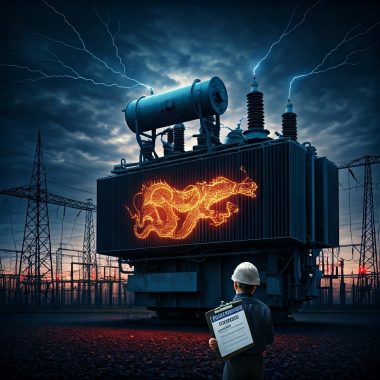America’s Power Grid at Risk As China Can Now Shut Down U.S. Electricity
In a world increasingly reliant on digital control and automated infrastructure, one of the most dangerous vulnerabilities may already be buried deep within the heart of America’s electrical system.
Across the United States, at least 500 ultra-high-voltage transformers manufactured in China are silently operating at critical points in the power grid… and all of them may be equipped with hidden “backdoors” that could allow hostile foreign powers to shut them down remotely.
A Startling Discovery at the Port of Houston
The alarm first sounded in the summer of 2019, when U.S. federal authorities intercepted a massive 500,000-pound Chinese transformer at the Port of Houston. It was originally destined for a power substation in Colorado but was instead quietly diverted to Sandia National Laboratories in New Mexico, a facility known for handling sensitive national security matters.
The transformer underwent a top-secret forensic inspection. According to Latham Saddler, former Director of Intelligence Programs at the National Security Council, the team at Sandia uncovered chilling evidence: “They found hardware that was put into [the transformer] that had the ability for somebody in China to switch it off.”
This wasn’t a hypothetical risk. This was proof of an embedded vulnerability—hardware planted during manufacturing that could be activated by a foreign adversary.
An Emergency Response and a Swift Reversal
On May 1, 2020, in response to the Sandia findings and broader concerns about foreign threats to the energy sector, President Trump issued Executive Order 13920, declaring a national grid security emergency. The order prohibited the acquisition or installation of certain foreign-manufactured electric equipment, including transformers from nations like China, citing a “national emergency with respect to the threat to the United States bulk-power system.”
Energy Secretary Dan Brouillette emphasized that this decisive action would “greatly diminish the ability of foreign adversaries to target our critical electric infrastructure.”
Yet, in a stunning reversal, the Biden administration suspended the order on its first day in office, January 20, 2021. The firm ban on suspect equipment was replaced with a less aggressive approach based on voluntary compliance and vague supply chain reviews. As of that moment, the protective framework was no longer in force—leaving America more vulnerable than ever.
An Expanding Trojan Horse
At the time of Executive Order 13920, around 300 Chinese-made transformers were already active in the U.S. grid. Today, that number has grown to at least 500—all part of the ultra-high-voltage infrastructure that forms the backbone of national energy transmission.
These transformers are not minor components. They are among the most vital and difficult-to-replace assets in the power grid. If even a few were simultaneously disabled, whether through a cyberattack or a remote hardware trigger, the resulting blackouts could cascade across states, affecting millions of homes and businesses.
According to grid security analyst Michael Mabee, whose extensive investigations into U.S. transformer sourcing have been published at GridSecurityNow.org, the threat is systemic. “The U.S. electric grid has become dangerously dependent on foreign-made components,” Mabee writes. “It’s not just about cost anymore—it’s about national survival.”
The Overlooked Danger of Smart Technology

The transformer threat is part of a larger issue: the spread of vulnerable software and hardware components throughout America’s Internet of Things (IoT) ecosystem. From smart thermostats and meters to control systems embedded in utility stations, foreign-made software can serve as a vector for cyberattacks, espionage, or sabotage.
The U.S. Cybersecurity and Infrastructure Security Agency (CISA) has repeatedly warned about phishing and malware attacks targeting IoT devices. These attacks can provide access points into wider networks, potentially allowing bad actors to manipulate or disable infrastructure remotely.
Once connected, these smart systems offer unprecedented control—but also dangerous exposure. In the context of grid infrastructure, even a minor breach could have catastrophic consequences.
A Growing Gap Between Awareness and Action
Despite clear evidence and expert warnings, many within the energy sector and federal government have been slow to act. The regulatory landscape is murky, enforcement is weak, and much of the response has been fragmented across agencies.
In testimony before Congress, Tom Fanning, CEO of Southern Company, one of the largest U.S. utility operators, warned, “Our adversaries understand that attacking the electric grid is a force multiplier. You can affect banking, communications, water—everything—by disabling power.” (source)
What Needs to Be Done
To secure the grid, the U.S. must take immediate, comprehensive action. This includes:
- Reinstating and expanding Executive Order 13920 to permanently ban foreign-made critical components from adversary nations
- Funding domestic transformer manufacturing to reduce dependency on China
- Establishing mandatory cybersecurity protocols for all IoT-connected devices in critical infrastructure
- Increasing transparency and public accountability around grid sourcing decisions
As the global power balance shifts, America can no longer afford to prioritize short-term cost savings over long-term national security. The very system that powers our lives is at stake—and the time to act is now.









